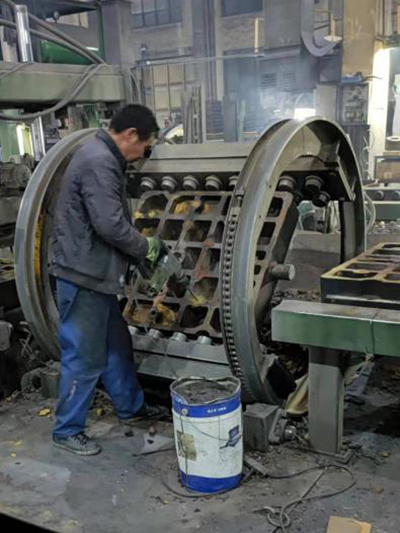The Applications of Sand Casting Process An Overview
Sand casting is one of the oldest and most widely used metal casting processes in manufacturing. The fundamentals of sand casting involve creating a mold from sand and pouring molten metal into it to form various components. This versatile casting technique lends itself to a variety of applications across multiple industries, ranging from automotive to aerospace, and its significance continues to grow in modern manufacturing.
1. Automotive Industry
One of the most prominent applications of sand casting is in the automotive sector. Components such as engine blocks, transmission cases, and various other structural parts are commonly produced using this method. The ability to create complex shapes and intricate details makes sand casting an ideal choice for producing engine components that require precision and durability. Furthermore, the low cost of materials, combined with the capability to produce large quantities, allows manufacturers to meet the high demand for automotive parts efficiently.
2. Aerospace Industry
The aerospace industry also significantly relies on sand casting for producing lightweight but strong components. Parts such as housings, brackets, and various structural elements are fabricated using sand casting techniques. The ability to produce large, complex shapes with excellent surface finishes aids in the overall performance and safety of aircraft. With the increasing focus on reducing weight to enhance fuel efficiency, sand casting provides a viable option for manufacturers looking for cost-effective solutions without compromising quality.
In construction, sand casting is used to create a wide range of architectural and structural components, including ornamental fixtures, beams, and supports. The ornamental aspect is particularly appealing in this industry, as sand casting allows for artistic designs and detailed patterns, contributing to both the aesthetic appeal and structural integrity of buildings. Additionally, cast iron components produced via sand casting are favored for their durability and resistance to weather conditions, making them ideal for outdoor applications.
application of sand casting process

4. Art and Sculptural Applications
Beyond industrial applications, sand casting techniques are also employed in the art world. Artists utilize sand casting to create sculptures and art pieces, leveraging the method’s flexibility to reproduce complex forms. This application underscores the creative potential of sand casting, allowing artists to explore and express their visions through metalwork. The replication of designs enables both mass production of art installations and the creation of unique pieces tailored for specific purposes.
5. Electrical and Electronics Industry
In the electrical and electronics sector, sand casting plays a crucial role in the production of enclosures and housing for various electronic devices. The non-conductive properties of sand-cast components are beneficial in safeguarding electronic circuits from environmental factors and enhancing overall durability. Additionally, the cost-effectiveness associated with sand casting makes it an attractive option for manufacturers in this sector, who require both reliability and efficiency in production.
6. Agriculture and Heavy Machinery
The agricultural and heavy machinery industries also benefit from sand casting. Components like engine parts for tractors and heavy equipment are typically manufactured using sand casting due to the method's capability to produce robust and wear-resistant parts. The ability to cast large components while maintaining dimensional accuracy is crucial, as these parts often undergo significant stress during operation.
Conclusion
The applications of the sand casting process are vast and varied, highlighting its significance across multiple industries. Its ability to produce high-quality components in a cost-effective manner makes it a valuable technique in manufacturing. As technology continues to advance, so too will the methods associated with sand casting, further enhancing its efficiency and capabilities. The enduring relevance of sand casting in industrial production speaks to the method's versatility, efficiency, and adaptability to a broad spectrum of applications. With ongoing innovation, the future of sand casting looks promising, ensuring its place as a cornerstone of manufacturing for years to come.
Post time:Desemba . 07, 2024 14:05
Next:why is sand casting used
